The Hound of the Baskervilles (1959)
Directed by: Terence Fisher
Written by: Arthur Conan Doyle, Peter Bryan
Starring: André Morell, Christopher Lee, Marla Landi, Peter Cushing
UK
AVAILABLE ON BLU-RAY AND DVD
RUNNING TIME: 87 min
REVIEWED BY: Dr Lenera, Official HCF Critic
The infamous and cruel aristocrat Sir Hugo Baskerville is killed by a huge dog after he stabs to death the daughter of a tortured servant. From then on, the creature is known as the ‘Hound of the Baskervilles’ and, any night a Baskerville is alone on the moor, it will supposedly kill him. Several centuries later, the death of Sir Charles Baskerville is being reported by his best friend Dr. Richard Mortimer to Sherlock Holmes and Dr. Watson who then meet the new owner of Baskerville Hall, Sir Henry. Because Holmes has to be away on another case, he puts Watson in charge of watching over Sir Henry as an appearance by a tarantula only confirms to him that Sir Henry is in danger. On the way to Baskerville Hall, the coach driver warns that a serial killer who was found insane named Selden has escaped from nearby Dartmoor Prison two days ago….
You can’t beat the 1939 Basil Rathbone starrer for atmosphere, while the TV adaptation from 1988 with Jeremy Brett is probably the most faithful to Sir Arthur Conan Doyle’s book, but, though I certainly haven’t seen anywhere near all the 24 [yes, 24] film and TV versions, Hammer’s version is possibly the most entertaining, which makes it such a shame that this was the only Sherlock Holmes film they made. Quite a few of Doyle’s tales could be classified as borderline horror, and watching the 1959 The Hound Of The Baskervilles, the Hammer Horror style really suits them, the embellishments made so the film fits in with director Terence Fisher’s other horror films both stylistically and thematically generally working very well. In fact, I personally feel that it’s a little disappointing that Hammer went for a ‘A’ certificate with this one, which even it if had been stronger on the horror elements would still have worked fine as an adaptation of its source material, but never mind, it doesn’t really weaken the film, which serves as a good introduction for newcomers to the more traditional Holmes and for kids not quite old enough to see Dracula but who need to be primed in Hammer [Hammer horror, even if often viewed illicitly, was a prime source of my movie education when I was growing up, and still should be]. The film is amongst the best looking of Hammer’s films, set designer Bernard Robinson and cinematographer Jack Asher really going to town, while it also contains what is probably the most accurate, as well as enjoyable, performance of Holmes until Brett.
Kenneth Hyman, the son of Columbia executive Eliot Hyman, secured the rights to a proposed series of Holmes films. The script was written by camera operator Peter Bryant, though it feels like the work of Jimmy Sangster as it bears many similarities to some of his work. Bryant kept the plot of the novel but added details like a tarantula and Holmes being trapped in a caved-in mine, and, most notably, turned the character of Stapleton’s wife into his less sympathetic daughter, in doing so enhancing the class conflict aspect Hammer liked to dabble from time to time. Cushing, the first choice to play Holmes, insisted on accuracy, such as Holmes’ mantlepiece having his correspondence transfixed to it with a jack knife. Filming took place at Chobham Common and Frensham Ponds in Surrey with a few shots of Dartmoor inserted, and of course Bray. Hammer never really solved the problem of the Hound, even when they decided to restrict its appearance to the climax. They shot part of the scene with a small boy in Christopher Lee’s costume to enhance the Hound’s size, but it looked bad, so they opted for the largest dog readily available, a Great Dane named Colonel, wearing a mask. Unable to get him to jump on Lee, they started to prod him, whereupon he lunged at Lee and bit right through one of his arms. The BBFC insisted on three brief cuts [servant held against the fire, Sir Hugo saying “insolent cow” as he smells girl’s garments, and the Hound at Stapleton’s throat ] while in the US the MPAA ensured the overdubbing of the word “bitch”. Despite what some say, the film was popular at the box office but obviously not enough for Hammer to make another Holmes. Cushing later played Holmes in a late 60’s TV series which included another version of The Hound Of The Baskervilles!
The lengthy opening flashback really locates the story in Hammer’s Gothic world with the off-screen torturing of a servant and the chasing of a girl across the moors until she is stabbed with some kind of ceremonial dagger. Even though a keen eye can tell when location footage switches to a set, the sheer verve and excitement of the sequence is only undermined for me by much of it being scored by James Bernard’s climactic music cue from Dracula, which sticks out like a sore thumb if you’re familiar with the music, though I guess many wouldn’t notice as the orchestration is virtually the same as the rest of the score. Bernard only found out at the film’s premiere that a portion of his score had been, for some reason, replaced. After this we meet Holmes, and what a great introduction he has in this particular film, first shown to be looking half asleep, but probably deep in concentration as he listens to the story being told to him, before jumping up and crying “ah”, not because the story has come to an end, but because he’s decided what his next move in his game of chess will be. We get a minor thrill with a tarantula [obviously on someone’s arm rather than crawling up a piece of glass as in Dr No] before Watson, Holmes being busy, accompanies Henry Baskerville back to Baskerville Hall and we enter the world of creepy moors and sinister houses, both with secrets, and the eerie details begin to accumulate.
The strange light on the moors. The lit room in the house. The occasional howling of a dog. The escaped killer who may be staying in the house. The slightly sinister Stapleton and his daughter Cecille who live in a hut nearby, Cecille saving Watson from sinking into quicksand but behaving rather oddly. All this scarcely needs enhancing though Hammer, again probably mindful of the ‘A’ certificate, don’t make all this as creepy as they could have done, with a slight sense of holding back [though to be fair many disagree and consider this one of their very finest films]. The night time scenes in the house [largely a redress of Dracula’s castle], in particular, are a little edgy, but not as much as they could have been. Because Holmes is absent from the story for so long, most versions of Hound drag for a while, but Hammer’s version does fail to do this because the mid-section of the book has been hugely truncated and therefore things still proceed at a steady pace. We even get some comic relief courtesy of Dracula’s Miles Matheson again, here playing a sherry loving, bumbling Bishop, while the additions of a collapsing mine gives Cushing’s Holmes a great moment when he appears seemingly unscathed following a shot of the mine caving in on him and another of his companions wondering where he is. The climax, despite some frenzied cross-cutting, doesn’t quite work, though the dog’s mask is genuinely sinister, and most versions find this a hard scene to pull off convincingly anyway.
The additions to Doyle’s story, which also include a missing painting, are logically integrated into the story, though as usual some details are left a little vague. This is never really a problem – it’s easy to work things out for yourself, while this version, in keeping with the intent of many of the original stories which were attacking the rigid, stifling Victorian social system, really does bring to the fore the class aspects, especially when Holmes shows that he’s not above using fake but very callous snobbery to further his investigation. Cushing’s Holmes in this film is very manic, impulsive, arrogant and even slightly grumpy, probably because he’s intellectually superior to all around him. He finds it frustrating having to laboriously explain everything in detail because of how dull-witted and slow they are compared to him! He really seems to me to be exactly the character from the Holmes books. Funny how he’s twice mistaken for other people, the second as a man supposedly to fix a telescope. The only false note to me is that he seems to have a slight belief in the supernatural which really isn’t Holmes at all, but then Robinson’s main moor set doesn’t attempt to be realistic in any way with its fog wafting around and its impressionist colour schemes – a dash of red in the distance on the right and lots of green behind some railings on the left – and looks almost as distinctive and gorgeous as what you would find in an early Mario Bava film and is certainly comparable with Roger Corman’s Gothic efforts. Robinson, Asher and Fisher really were experimenting with look and style here and would take things even further in their next two efforts.
Andre Morell’s Watson must have seemed like a shock to those used to an older, more bumbling Watson, but here one really gets the impression that he is the one confidant whom Holmes trusts to “get it”, or at least persevere and put up with him. You can actually understand why Holmes would have developed such a lasting friendship and partnership with Watson, and even be occasionally inspired by him. Lee has a rather smaller role in this than normal but his Henry Baskerville shows him to be quite an adept romantic lead. His character tries to breach the divide between classes in his pursuit of Maria but in the end the separation between aristocrat and peasant is too much. Marla Landi, the obligatory Hammer glamour addition, does surprisingly well as the duplicitous, but clearly a bit insane [in this version] Cecille. Bernard’s simple score is typically moody with some pulsing thrill cues here and there, though it’s not amongst his best works. Hammer’s version of The Hound Of The Baskervilles could have been a little better in a few areas, and I would personally preferred it if it went a bit more for the horror, but is overall very classy, made with care and a rich attention to detail, and is very entertaining.
Read Bat’s review of The Hound Of The Baskervilles, recently released on a superb Blu-ray from Arrow Films, here:
https://horrorcultfilms.co.uk/2015/06/the-hound-of-the-baskervilles-1959-arrow-blu-ray-review/

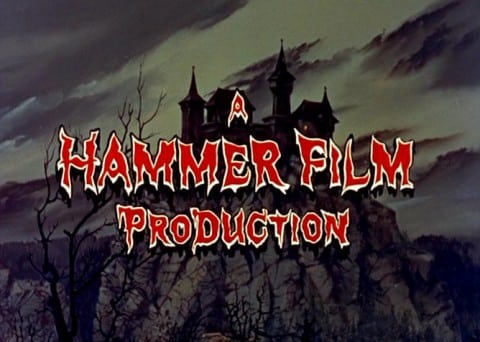

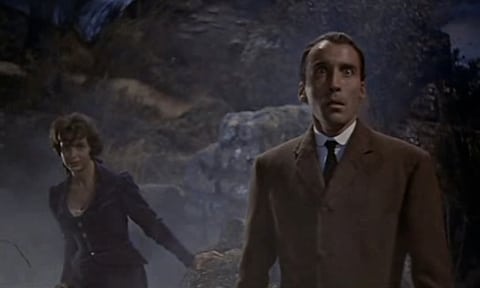
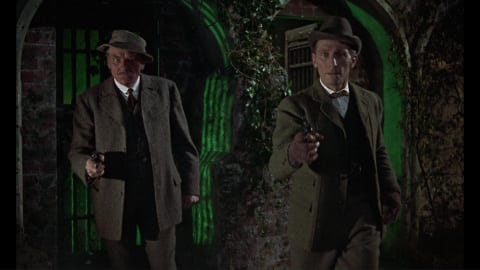



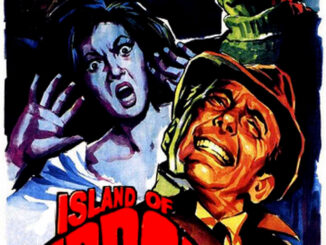

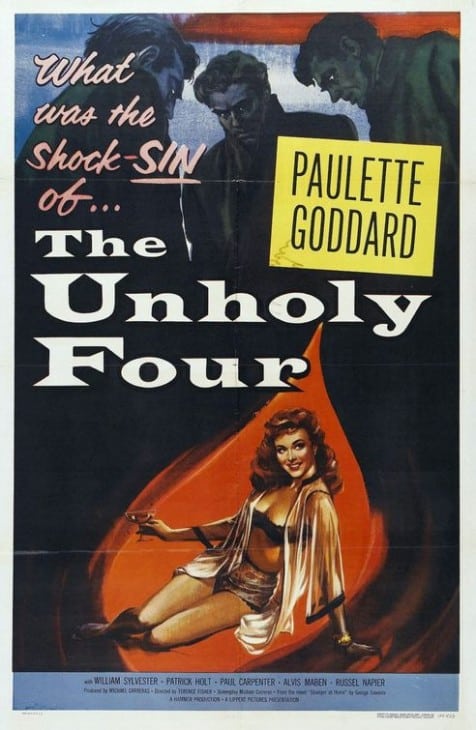
Be the first to comment